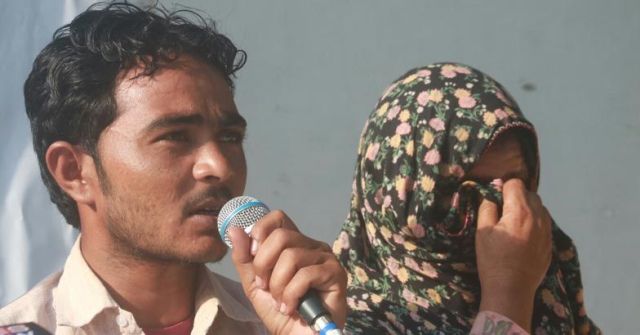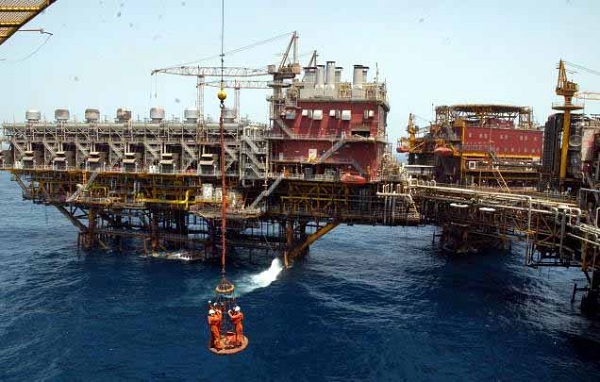
by Editor | May 25, 2021 | Opinions
 By V. Srinivas,
By V. Srinivas,
A new aspirational India is on the march. A mature democracy, India at 70 needs strong institutions evolving with the changing times to fulfil rising aspirations.
Land — the summum bonum of rural existence — and agricultural structure are the most important determinants of India’s development. As land is rural India’s critical income-generating asset, effective administration of land is a vital function of the state. The critical land reforms laws are the Land Ceiling Act, the Tenancy Act and the Land Revenue Act.
The implementation of India’s land reforms policies is mandated on two critical institutions — the Board of Revenue and the District Collector/Sub-Divisional Officer. The Boards of Revenue of what are now Uttar Pradesh, Rajasthan, Madhya Pradesh and Bihar were established in 1944 as the apex appellate authorities and were led by ICS officers in pre-independence years.
These institutions of governance will continue to exist for another 100 years as critical pillars of Indian democracy. It is important that they are strengthened and remain vibrant. Today, many of the Boards of Revenue and the District Collector offices are in acute need of modernisation.
The Board of Revenue is Rajasthan’s greatest institution, dating back to 70 years. It has 21 courts and supervisory responsibilities over 1,327 subordinate revenue courts. The Board of Revenue currently has 65,000 appeals, the largest pendency of court work in any Board of Revenue in India. The cases pertain to appeals for partition of land holdings, declaration of tenancy rights, land ceilings, references from District Collectors for protection of common lands and revision cases filed by petitioners against interim orders of subordinate courts.
A manual system dealing with case-files makes effective supervision and timely disposal extremely challenging. Several trial courts have case-loads of over 2,000 cases. The first appellate authorities have case-loads of over 2,500-3,000 cases. The Board of Revenue and the trial courts are witnessing a scenario where cases being filed are far higher than the cases being decided.
Further, judgments of the Board of Revenue and District Collectors are permanent records and require efficient document management systems if they are to sustain over the next century. A manual system of handling case files of this magnitude makes the Boards of Revenue resemble a slowly sinking Titanic.
There is only one way to save the Titanic: Embracing technology and modernising — a Digital Rajasva Mandal — to usher in a digital revolution in revenue court administration.
The Digital Rajasva Mandal would represent a fully online institution meeting the needs of 21st century land reforms. It represents a significant step in the march towards a New India. Technology modernisation to be implemented over a period of 12 months will cover the courts in the Board of Revenue, the Courts of Revenue Appellate Authorities, the Courts of Divisional Commissioners, the Courts of District Collectors, the Courts of Sub Divisional Officers and Courts of Tehsildars.
The Digital Rajasva Mandal components are copies of judgments, daily orders, classification and bunching of cases in cause lists; online follow-up of files in revision cases called from subordinate courts; online follow-up of service of summons; conveying the decrees for implementation to tehsil offices; SMS messages to advocates on the listing of cases in cause lists; and digital panels for display of cases being heard in the court. The Revenue Courts Management Systems (RCMS) software for revenue courts of Rajasthan has been designed to ensure speedy implementation of these activities.
In a historical first step, Rajasthan’s Board of Revenue has started placing all judgments in the public domain on its website from September 2017. The Revenue Appellate Authorities and District Collectors/Sub Collectors would be placing cause lists and judgments from November 2017. The Board of Revenue for Rajasthan would create a Rajasthan Revenue Courts Grid which would provide the litigants with a wide array of judgments of revenue courts on a common platform. This would represent the first digital revolution in revenue court administration in India.
There has been a transformation in rural administration with the Jan Dhan, Aadhar and Bhim applications — and direct benefits transfers. India’s institutions must keep pace with the changes. Institutional reform in revenue courts is a major step forward. The Digital Rajasva Mandal would provide the roadmap for revenue courts of India for providing timely justice. It would signify the first digital revolution in revenue courts administration and the march towards a New India.
(V.Srinivas, an IAS officer, is Chairman, Rajasthan Tax Board, and holds additional charge as Chairman of the state’s Board of Revenue. The views expressed are personal. He can be contacted at vsrinivas@nic.in)
—IANS

by Editor | May 25, 2021 | News, Politics
 By Nikhil M. Babu,
By Nikhil M. Babu,
New Delhi : With their less-than-an-acre rice field parched due to poor rains and elder son caught up in a court case, what led to Pehlu Khan’s lynching has ironically turned into the only source of income for his family: Two cows.
In April, Khan, a dairy farmer from Jaisinghpur village in Haryana, was lynched by cow vigilantes in Behror of Alwar district in Rajasthan. He was returning home after purchasing two cows and two calves from Jaipur.
The murder caught national attention and Khan became the face of protests against the spate of lynchings across the country in the name of gauraksha or cow protection.
After Khan’s death, two cows — one black and the other a light coloured one — were given to the family by two organisations and now milk from them is the only source of income for the family.
“We get a little money from selling milk and relatives help us with the rest,” Khan’s wife Jabuna, 50, told IANS here.
Sporting a faded pink salwar with a black dupatta over her head, Jabuna said her elder son Irshad, who was with his father when they were attacked, is caught up in the case and has not been going for work.
“I’m not able to do anything after his death,” Jabuna said, adding that earlier she used help her husband in their field.
As she started to explain how life has been after Khan’s death, her eight-year-old son Inshad came running and hugged Jebuna — his arms could barely reach her waist.
“We make around 150 rupees a day by selling milk and rest of the milk is used in the household,” Irshad, 24, said.
Irshad used to work as a driver, but not any more.
“How will I go? Now it’s my responsibility to look after the whole family. Will I look after the family and manage the case, or go for driving?” he asked.
He said the two cows they had bought from Jaipur for Rs 45,000 never reached their house and they were shifted to a “gaushala” in Rajasthan.
Apart from the financial crunch, the family also has a tough legal battle ahead of them to get justice for Khan’s murder.
“Last time I went to Behror for the case, they (people close to the accused) stopped their car near ours and told me that they’ll shoot me if I come back,” Irshad told IANS.
The family has sought a court-monitored probe into Khan’s killing and demanded shifting the case out of Rajasthan, after the local police gave a clean chit to six of the accused.
“They beat him (Khan) in front of my eyes,” Irshad said about the six persons who got the clean chit.
Earlier, five other accused had also got bail on the ground that they were not present at the spot during the crime.
Irshad has only one question for the government, the police, and the judiciary: “If no one was there, then who killed my father?”
(Nikhil M. Babu can be contacted at nikhil.b@ians.in)
—IANS

by Editor | May 25, 2021 | Business
 By Sourabh Kulesh
By Sourabh Kulesh
Barmer:(IANS) Oil and gas major Cairn India is to launch the world’s largest enhanced oil recovery programme in the Rajasthan desert using polymer injection technology for recovering more oil at its processing terminal near here.
The Mangala processing terminal in Barmer district, which laid the foundation of Cairn India’s “Rajasthan Project” and transformed the company with the discovery of its first oil well Mangala-1, in 2004, is now home to Cairn’s new polymer injection facility where new cutting-edge technology Enhanced Oil Recovery (EOR) has been introduced to maximise the potential.
The world’s largest oil well discovered in 2004, Mangala-1 was the company’s first discovery after many 3D seismic explorations.
“It was in the sandy undulations of the Thar desert almost two decades ago that the company’s convention-shattering exploration efforts proved successful on the 14th attempt,” said Cairn India director Suniti Bhat.
He said the breakthrough gave birth to the “Rajasthan Project” — a vision that has stood the test of time and has been an enabler in bringing India a step closer to energy security.
Explaining the new EOR programme, he said polymer flood or addition of polymers to water, used particularly in older and declining oil wells and reservoirs, enables better displacement of oil and improves the recovery factor.
The successful polymer flood pilot project in Mangala produced incremental oil of nearly 11 percent.
The company’s Central Polymer Facility (CPF) will, by end of the current fiscal, cover the entire Mangala field spread over 3,111 sq. km. west of Barmer town.
“Current polymer injection rates and production performance have reduced risks significantly, from both the perspective of surface facilities and reservoir,” the company said.
Some of the pre-producer wells have already been converted into polymer injection wells and modifications to the existing facilities for handling polymerised fluids are nearing completion.
Since the first barrel produced in 2009, the block has delivered more than 300 million barrels. Cairn has a total of 141 oils wells in Rajasthan — 117 injector wells and 24 producers.
The bringing together of the best of technologies at the lowest capital expenditures in the world has had an immense bearing on Cairn’s profitability and financial resilience, officials said.
“Less than 10 percent of energy companies in the world can be cash- positive in this kind of an economic environment,” chief executive Mayank Ashar told IANS.
“An additional recovery of 40-50 million barrels of unswept oil still in-ground at the Bhagyam field is expected. The company estimates a capital cost for the Bhagyam EOR project at $260 million, resulting in a development cost of $5-6 per barrel,” he added.
Ashar said that over the years, Cairn India’s single biggest contribution is its role in achieving energy self-sufficiency for the country through introduction of smart next-generation technology in the oil and gas sector.
Besides the new technology launch, the company also gave a briefing on its CSR activities in the areas of skill development, education, health and sanitation and water and renewable energy.
“CSR is an integral element of our business, as we believe that sustainable development in our area of operation is essential for inclusive growth,” Ashar said.
The visiting journalists were taken to one of the 37 schools that Cairn has opened in the district. The schools have 250 teachers mentoring over 7,000 students.
Apart from providing specialised doctors and training 1,300 health workers in the district, the company has also launched mobile health vans that cater to the medical needs of nearly 300,000 people.
It has also established 34 water purifying plants serving nearly 50,000 community members in the district, besides building 2,800 toilets under the Nirmal Bharat Abhiyan.
The company also revealed that it has approached Delhi High Court seeking an early government decision on extension of its contract for the Barmer block, as also a better price for the crude oil produced.
(The writer was in Barmer on the invitation of Cairn India. He can be contacted at sourabh.k@ians.in)



